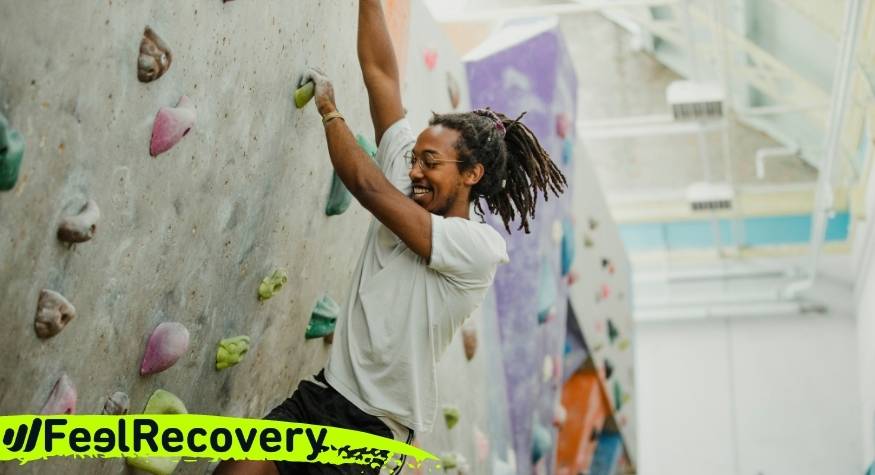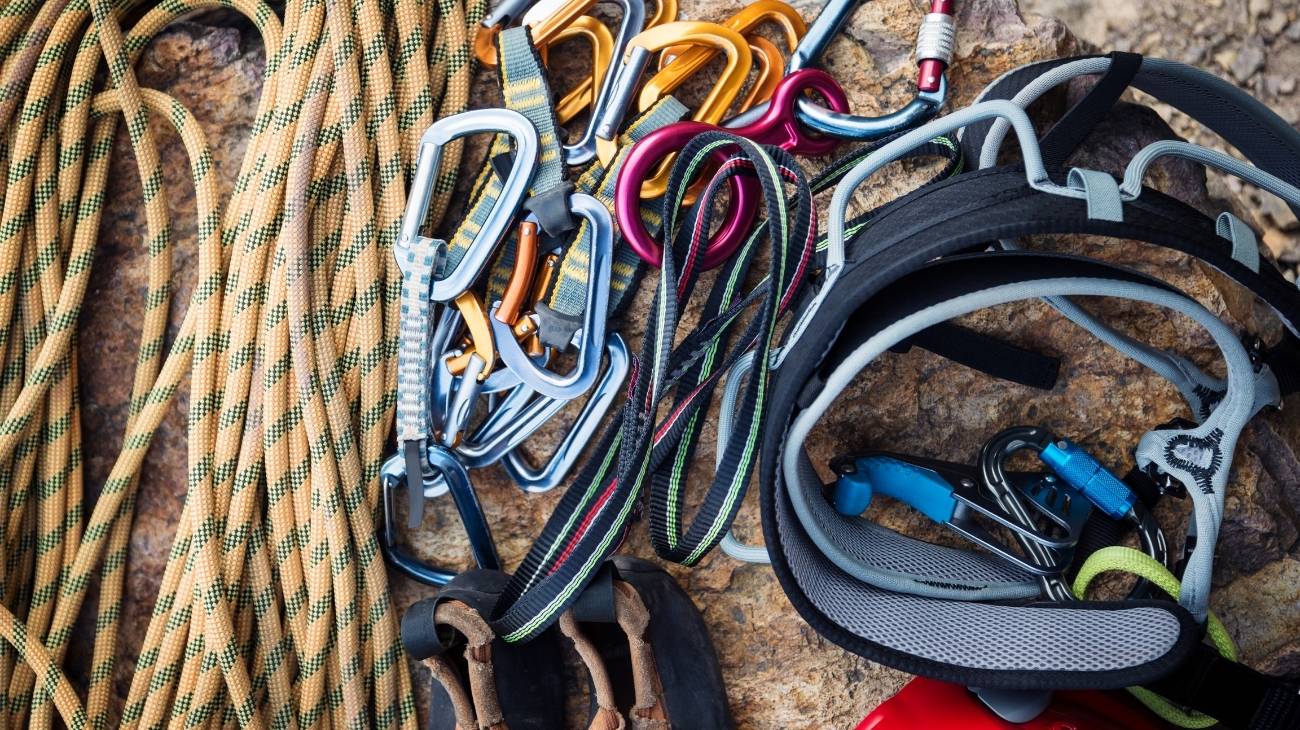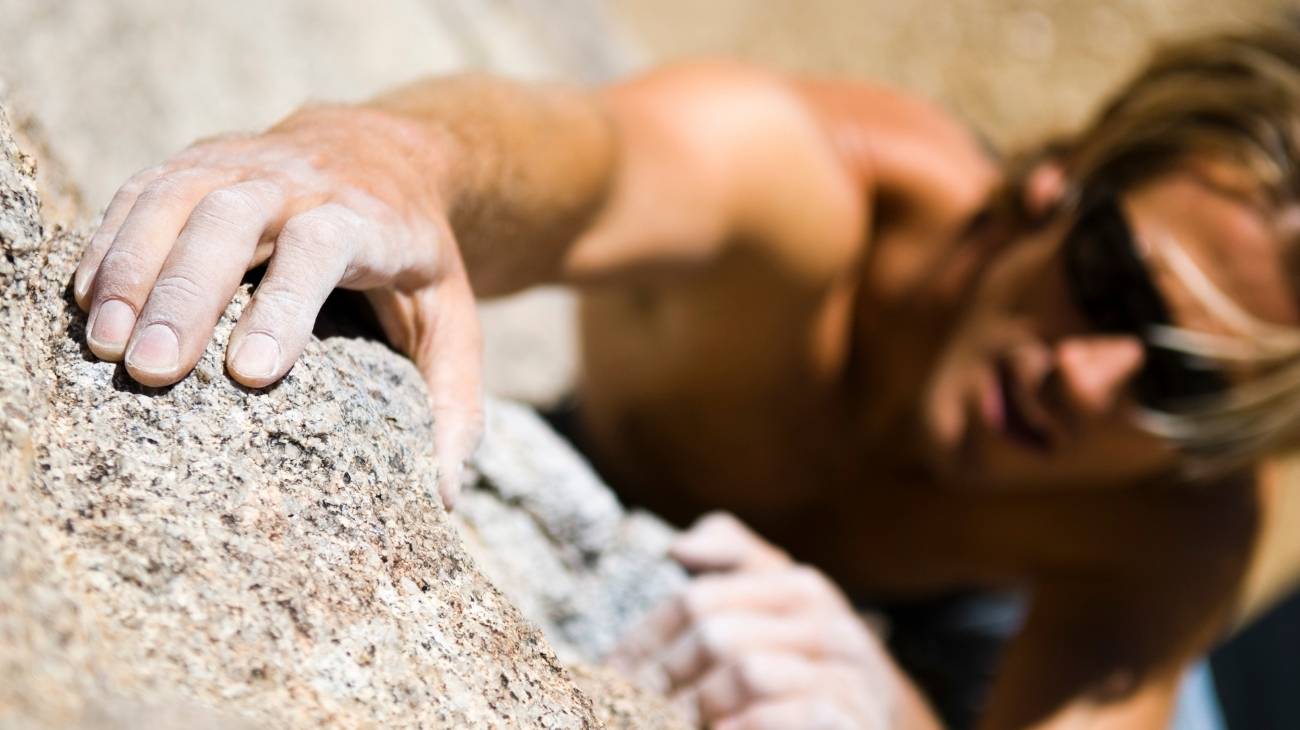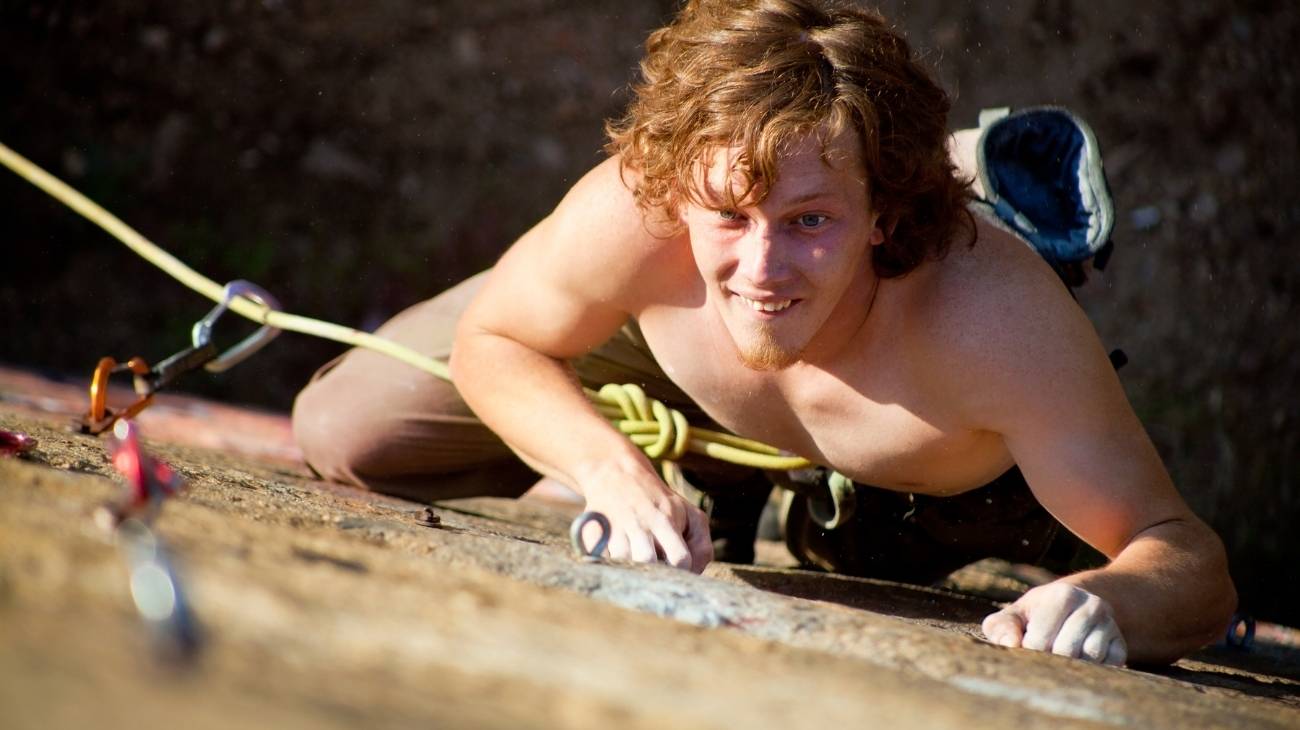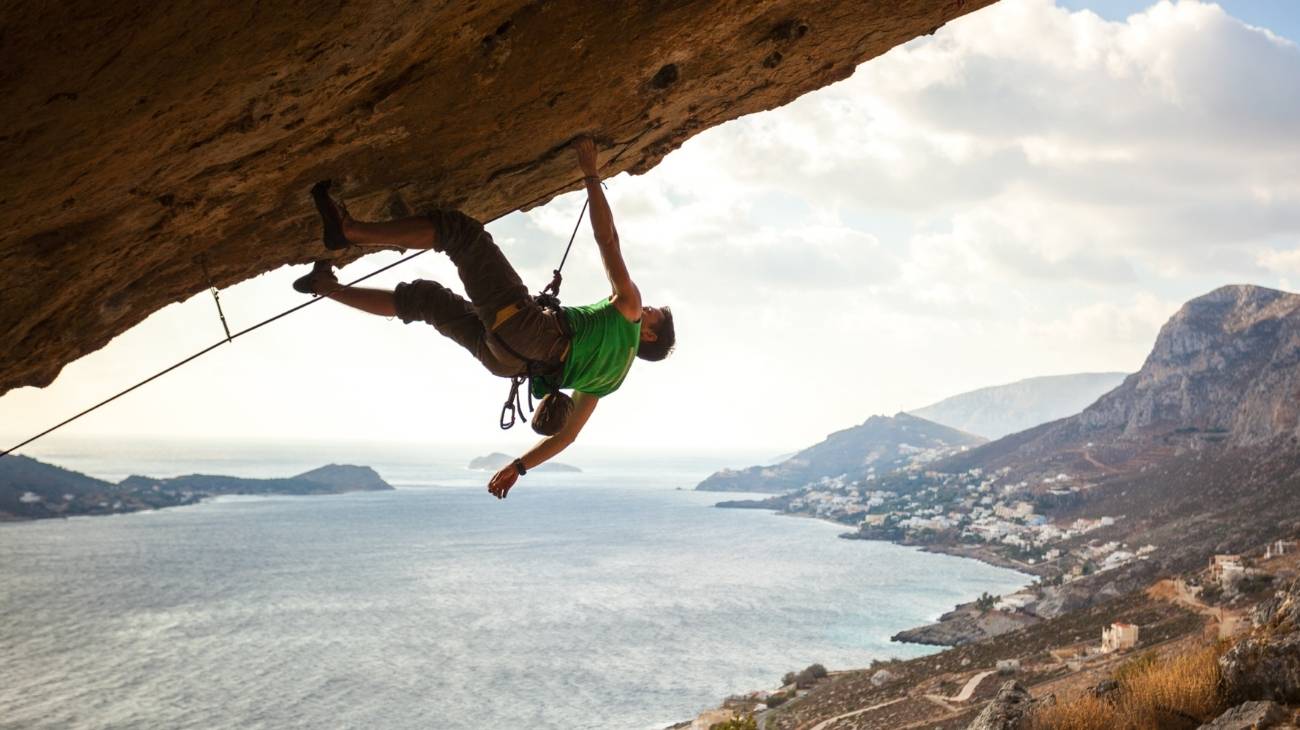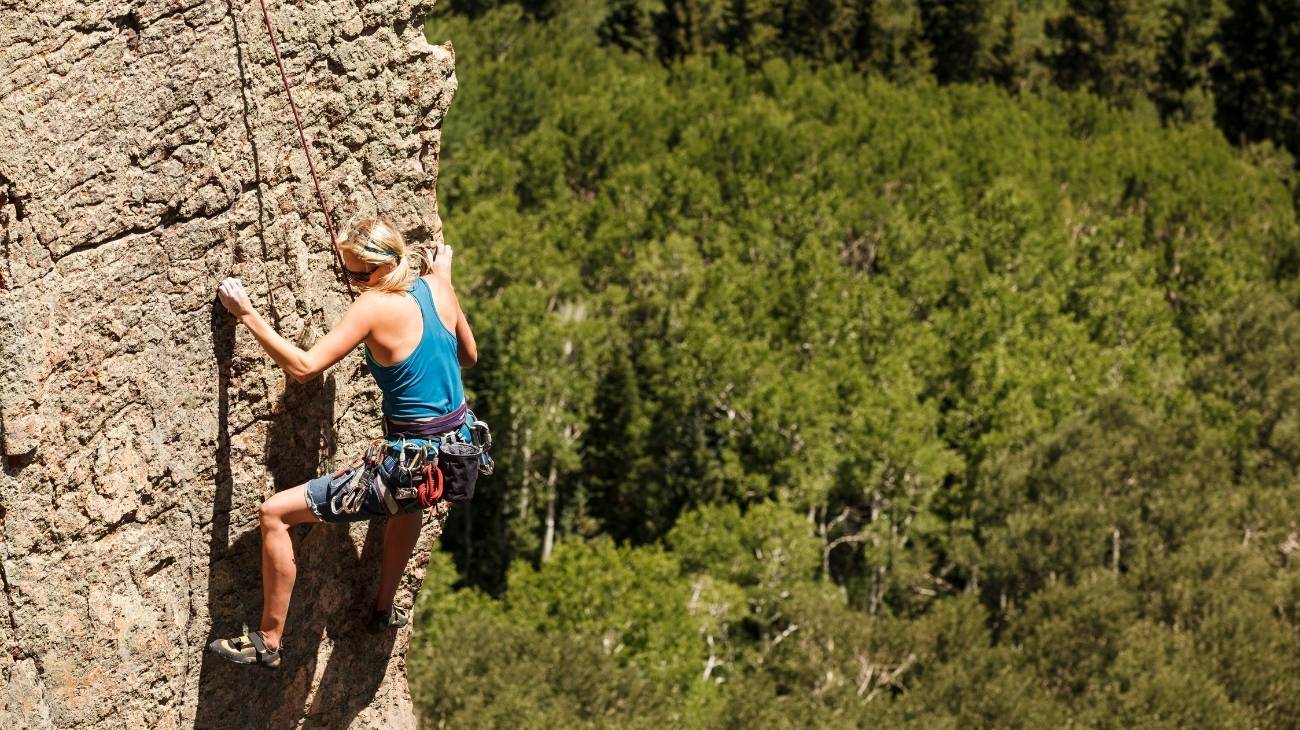Climbing is a sport that requires the use of your whole body and high mental concentration. Today we want to talk to you about sports shoulder injuries in rock climbing, mainly caused by overuse of the shoulder or during an incorrectly executed body turn.
If you want to know what are the most common types of shoulder injuries in climbing and how to treat them with the RICE therapy, have a look at the following.
What are the most common types of shoulder injuries when climbing?
In general, rock climbing injuries are caused by overuse or decompensation of muscles and joints . They are also caused by overuse of certain specific gestures with a limited range of motion. This is a consequence of poor technique and inadequate training.
The shoulder is the part of the body most vulnerable to injury in climbers, as it is the most mobile joint in the body. Among the main risk factors are shoulder locking position, overloading, compensations, and inadequate training, which increase with frequency and difficulty.
Here are the most common types of shoulder injuries and how they occur in climbing:
SLAP injuries
The acronym SLAP injury stands for "superior labral tear from anterior to posterior". That is, a tear that is generated at the upper level of the labrum, from the front and towards the posterior area of the shoulder. This pathology is very often associated with rock climbing.
Risk factors, in addition to falls and trauma, include overuse or repetitive movements of the shoulder while climbing. This places stress on the front of the shoulder due to the position exerted on the biceps tendon. However, in some cases it is also possible to develop this tear through gradual overuse, without clear trauma.
Rotator cuff injuries
Rotator cuff injuries or tendonitis are caused by inflammation of the rotator cuff tendons. In rock climbing, these tears are caused by large overloads on the shoulder caused by repetitive movements or overuse. The climber will experience pain in the anterior region of the shoulder, which may extend down the arm. They may also experience a popping or clicking sound when moving the arm, shoulder and elbow weakness, ecchymosis, among others.
Shoulder dislocation
Shoulder dislocations or dislocations in climbing are caused by mechanisms that require forced rotation with the arm in abduction. Also, by falls on the shoulder in elevation, produced by direct force applied to the posterior aspect of the humerus. As a result, the head of the humerus is pulled out of the glenoid cavity, causing instability of the joint. This can be partial, known as subluxation, or total, known as shoulder dislocation.
Shoulder bursitis
Shoulder bursitis or subacromial bursitis is an inflammation of the bursa. This is the region below the acromion that covers the tendons in the rotator cuff of the shoulder. The aetiology of this condition is associated with secondary damage to the rotator cuff tendon. However, it may also be caused by microtrauma that causes synovial fluid to segregate and increase in size. As a result, mild pain will be experienced, which will be increased by abduction or elevation of the arm.
Best products for the recovery of shoulder injuries in climbing and mountain sports
Bestseller
-
Acupressure Mat and Pillow (Black/Gray)
£44,95 -
Acupressure Mat and Pillow (Green/Navy)
£44,95 -
Acupressure Mat and Pillow (Pink/Bordeaux)
£44,95 -
Acupressure Pillow (Black/Gray)
£21,52 -
Acupressure Pillow (Green/Navy)
£21,52 -
Acupressure Pillow (Pink/Bordeaux)
£21,52 -
Ice Massage Roller Ball (Black)
£34,95 -
Ice Massage Roller Ball (Green)
£34,95 -
Ice Massage Roller Ball (Pink)
£34,95 -
Microwave Wheat Bag for Neck & Shoulder Pain Relief (Hearts)
£21,50 -
Microwave Wheat Bag for Neck & Shoulder Pain Relief (Oxford)
£21,50 -
Microwave Wheat Bag for Neck & Shoulder Pain Relief (Sport)
£21,50 -
Microwave Wheat Bag for Neck Pain Relief (Hearts)
£17,50 -
Microwave Wheat Bag for Neck Pain Relief (Oxford)
£17,50 -
Microwave Wheat Bag for Neck Pain Relief (Sport)
£17,50 -
Microwaveable Wheat Bag for Pain Relief (Hearts)
£17,50 -
Microwaveable Wheat Bag for Pain Relief (Oxford)
£17,50 -
Microwaveable Wheat Bag for Pain Relief (Sport)
£17,50 -
Shoulder Support Brace (Black)
£21,95 -
Shoulder Support Brace (Green)
£21,95 -
Shoulder Support Brace (Pink)
£21,95 -
Trigger Point Massage Stick (Black)
£12,95 -
Trigger Point Massage Stick (Green)
£12,95 -
Trigger Point Massage Stick (Pink)
£12,95
How to apply the RICE therapy to treat shoulder injuries in rock climbing?
A new update of the RICE protocol is known as the PRICE therapy. It differs from the first by including an initial phase called Protection (P). Although it is not very well known, today we want to tell you about it so that you can apply it at home to shoulder injuries in climbing:
- Protection: This first phase involves protecting the shoulder to prevent the injury from worsening. It also helps to accelerate the healing of the injured area. To achieve this, you need to stop physical activity and protect the area using neuromuscular shoulder taping.
- Rest: Combined with protection, it is important to rest the shoulder for 24 to 48 hours after the injury. It is important to stop any physical activity that causes discomfort.
- Ice: Applying cold gel packs is indicated as a very effective therapy for acute injuries. This will help to reduce inflammation and pain, if applied within 72 hours of the injury. Take 1-2 hour breaks and repeat this process for at least 3 days.
- Compression: Elastic shoulder braces are one of the most common shoulder injury recovery products. However, avoid over-tightening to prevent swelling under the injured area. If you feel cold skin, tingling or numbness, consult your doctor immediately.
- Elevation: Elevation corresponds to keeping the injured area elevated above the level of the heart, provided the injury is to the lower and upper limbs. In the case of the shoulder, this step should be omitted.
References
- Schöffl, V., Simon, M., & Lutter, C. (2019). Finger and shoulder injuries in rock climbing. Der Orthopäde, 48, 1005-1012. https://link.springer.com/article/10.1007/s00132-019-03825-3
- Jones, G., Schöffl, V., & Johnson, M. I. (2018). Incidence, diagnosis, and management of injury in sport climbing and bouldering: a critical review. Current sports medicine reports, 17(11), 396-401. https://journals.lww.com/acsm-csmr/fulltext/2018/11000/incidence,_diagnosis,_and_management_of_injury_in.9.aspx
- Wilk, K. E., Obma, P., Simpson, C. D., Cain, E. L., Dugas, J., & Andrews, J. R. (2009). Shoulder injuries in the overhead athlete. Journal of orthopaedic & sports physical therapy, 39(2), 38-54. https://www.jospt.org/doi/full/10.2519/jospt.2009.2929
- Voight, M. L., & Thomson, B. C. (2000). The role of the scapula in the rehabilitation of shoulder injuries. Journal of athletic training, 35(3), 364. https://www.ncbi.nlm.nih.gov/pmc/articles/PMC1323398/
- Green, S., Buchbinder, R., Hetrick, S. E., & Cochrane Musculoskeletal Group. (1996). Acupuncture for shoulder pain. Cochrane Database of Systematic Reviews, 2010(1). https://www.cochranelibrary.com/cdsr/doi/10.1002/14651858.CD005319/full
- Rooks, M. D. (1997). Rock climbing injuries. Sports Medicine, 23, 261-270. https://link.springer.com/article/10.2165/00007256-199723040-00005
- Cole, K. P., Uhl, R. L., & Rosenbaum, A. J. (2020). Comprehensive review of rock climbing injuries. JAAOS-Journal of the American Academy of Orthopaedic Surgeons, 28(12), e501-e509. https://journals.lww.com/jaaos/Abstract/2020/06150/Comprehensive_Review_of_Rock_Climbing_Injuries.5.aspx
- Jones, G., Asghar, A., & Llewellyn, D. J. (2008). The epidemiology of rock-climbing injuries. British journal of sports medicine, 42(9), 773-778. https://bjsm.bmj.com/content/42/9/773.short
- Backe, S., Ericson, L., Janson, S., & Timpka, T. (2009). Rock climbing injury rates and associated risk factors in a general climbing population. Scandinavian journal of medicine & science in sports, 19(6), 850-856. https://onlinelibrary.wiley.com/doi/abs/10.1111/j.1600-0838.2008.00851.x
- Haas, J. C., & Meyers, M. C. (1995). Rock climbing injuries. Sports Medicine, 20, 199-205. https://link.springer.com/article/10.2165/00007256-199520030-00006

